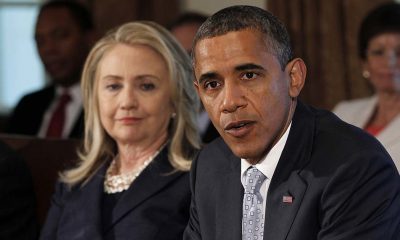World
Tattoo offers needle-free way to monitor sugar levels

Washington: In a promising step forward in non-invasive glucose-testing for diabetes patients, researchers have developed a temporary tattoo that both extracts and measures the level of glucose in the fluid in between skin cells.
“The readout instrument for patients will eventually have Bluetooth capabilities to send this information directly to the patient’s doctor in real-time or store data in the cloud,” said Indian-origin graduate student Amay Bandodkar, who along with his colleagues at the University of California, San Diego, made the breakthrough.
The researchers have described their flexible device — which consists of carefully patterned electrodes printed on temporary tattoo paper — in their report in the journal Analytical Chemistry.
A very mild electrical current applied to the skin for 10 minutes forces sodium ions in the fluid between skin cells to migrate toward the tattoo’s electrodes.
These ions carry glucose molecules that are also found in the fluid.
A sensor built into the tattoo then measures the strength of the electrical charge produced by the glucose to determine a person’s overall glucose levels.
The team applied the tattoo to seven men and women between ages 20 and 40 with no history of diabetes.
None of the volunteers reported feeling discomfort during the tattoo test and only a few people reported feeling a mild tingling in the first 10 seconds of the test.
According to Bandodkar, this “proof-of-concept” tattoo could pave the way for their research facility to explore other uses of the device, such as detecting other important metabolites in the body or delivering medicines through the skin.
The research team is also working on ways to make the tattoo last longer while keeping its overall cost down.
“Presently, the tattoo sensor can easily survive for a day. These are extremely inexpensive and can be replaced without much financial burden on the patient,” Bandodkar said.
The sensor was developed and tested by Bandodkar and colleagues in professor Joseph Wang’s lab at the nanoengineering department and the Center for Wearable Sensors at the Jacobs School of Engineering at UC San Diego.
World
Lockdowns in China Force Urban Communities to Defy Censorship and Vent Frustration Online

Shanghai’s rich middle class is leading a wave of online dissent over the strict and prolonged lockdowns imposed in various parts of the country. Chinese internet censorship is struggling as patience is wearing thin in many urban centers, coming up with creative forms of online protests.
Social Media Posts Revealing Lockdown Tension in Shanghai
Drawn-out lockdowns are nothing new in China as authorities insist with the nation’s zero-Covid policy since the start of the pandemic. Currently over This time around, however, metropolitan areas like Shanghai are increasingly difficult to keep quiet, given that its more than 25 million residents have seen weeks of total isolation along with food shortages and many other service interruptions.
Dozens of towns and reportedly over 300 million Chinese citizens have been affected by lockdowns of different severity. As expected, urban netizens have been most outspoken over their difficulties by finding creative ways to get around state censorship and bans placed on topics, news comments and spontaneous campaigns.
Shanghai residents have been using mobile proxies and hijacking seemingly unrelated hashtags to talk about healthcare issues, delivery failures and the overall severity of their situation. The “positive energy” that the Chinese government wants to transmit during the recent prolonged series of lockdowns does not come naturally to those counting food supplies and online censors are working hard to filter words, trending topics and undesired social media sharing.
WeChat groups and message threads are under constant monitoring. Posts questioning the zero-Covid approach have been quickly deleted, including by leading Chinese health experts like Dr. Zhong Nanshan. Video footage is soon censored and protests and investigations are quickly made to disappear.
Where this has not worked, officials have exposed banners with warnings and outright threats like “watch your own mouth or face punishment”, while drones have been patrolling the city skies. Yet, if anything, this has led to further tensions and unspoken confrontation with Shanghai’s educated and affluent middle class.
Creative Online Solutions Harnessing Civic Energy
Announcements by Chinese social media that they would be publishing the IP addresses of users who “spread rumors” have not helped either. Tech industry research has shown that much of Asia’s tech-savvy population has a habit of using mobile proxies and other privacy tools, quickly finding workarounds to browse the internet freely and talk to the world about the hottest topics.
The sheer volume of forbidden posts is already a challenge for the very censorship system, experts explain. Unable to track all trending hashtags, state workers overlook topics that speak about the US, Ukraine or other popular news. Linking human rights elsewhere to their situation, Chinese online dissidents establish their informal channels and “hijack” the conversation to share personal or publicly relevant information about the Covid suppression in their town.
Sarcastic and satirical posts still dominate. Others hope to evade the censors by replacing words from famous poems or the national anthem. One thing is certain – social media, when harnessed with the right creativity, has proven its ability to mount pressure on the government in even some of the most strictly controlled tech environments like China.























